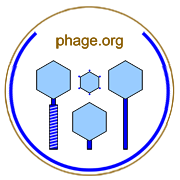

Efficiency of plating determination in which phages are preadsorbed to a potentially phage-destructive (i.e., restrictive) host
bacterium, with preadsorption followed by free phage removal, mixture with permissive-host indicator, and plating.
With ECOI determinations, plaque formation is indicative only of productive infection of the initially infected (preadsorbed) bacterium. This is rather than reflecting other aspects of plaque formation such as phage burst size and phage latent period, which can impact ordinary efficiency of plating determinations.
It is a very common error in phage biology to equate failure to form a plaque, i.e., low efficiency of plating, with phage inviability. Plaque formation is a complex process and "plaques" are not scored unless they are visible. Visibility requires a "race" between phage population growth, and spread, against bacterial lawn maturation.
If one starts with too many bacteria, then lawn maturation might occur prior to plaque maturation. If phage burst size is too low (e.g., <10) then spread rate may be too low to allow for plaque visualization. If latent period is too long then the same may occur. In each of these cases, ECOI determinations may indicate phage viability on a given host even if standard plaque assays do not.
Another way of making the above (and additional) points is to note that plaquing can give you phage viable-infection false negatives for phages that cannot "vigorously" infect (resulting in low efficiency of plating) while spotting can give you phage-infection "false positives", that is, of phage stocks that can lyse or otherwise kill bacteria but also not vigorously infect (resulting in spotting but little or no subsequent plaque-forming ability). ECOI determinations, by contrast, can help to avoid both of these issues by providing plaques even if infection vigor is low, but not if infection vigor is completely lacking.
Additional discussion of ECOI and references can be found in Hyman and Abedon (2010).
For more on this topic, see Wikipedia, PubMed. Contact web master. Return to terms.